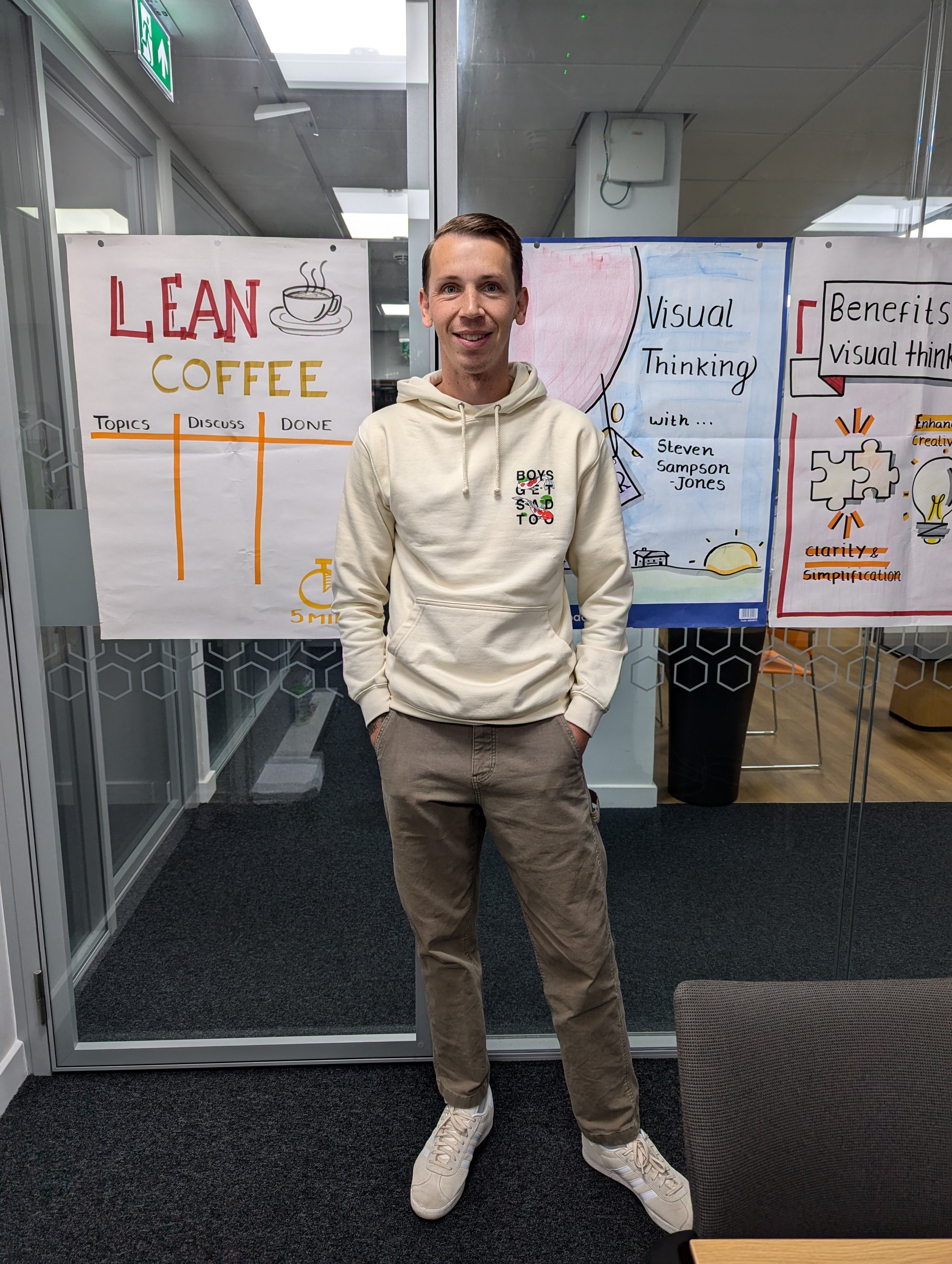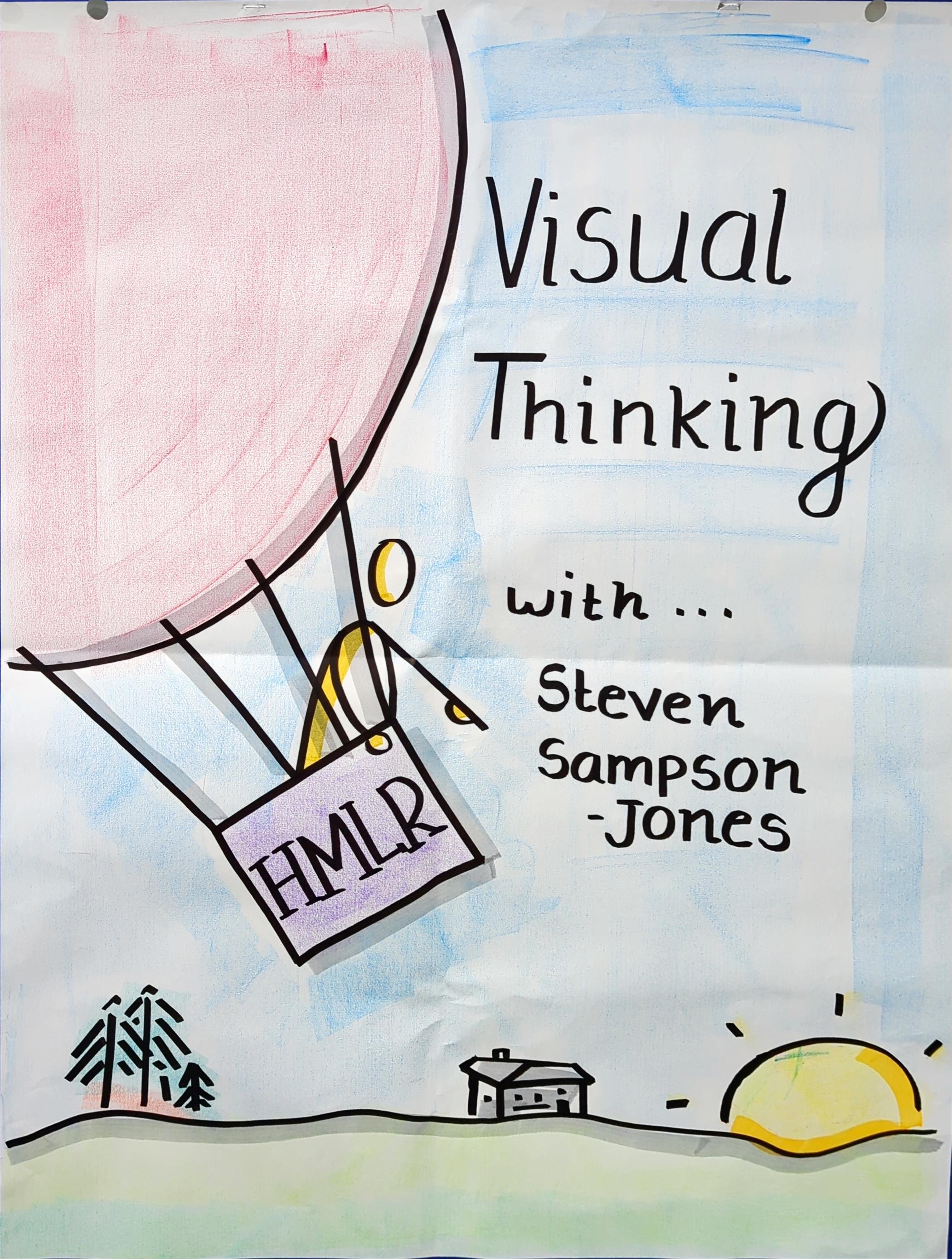Visual Thinking, Facilitation, and Retrospective Masterclass at HM Land Registry
The Visual Facilitator
I had the privilege of facilitating a masterclass at HM Land Registry, focusing on these very skills. This blog post will delve into the key aspects of Visual Thinking, the power of Liberating Structures in facilitation, and the importance of conducting effective retrospectives.
Visual Thinking
Visual Thinking is a powerful tool that helps teams to clarify complex ideas, foster creativity, and enhance communication. By using diagrams, sketches, and other visual aids, teams can break down intricate problems into manageable parts, making it easier to understand and solve them.
Bikablo poster
Key Benefits:
Enhanced Understanding: Visual aids help in breaking down complex information, making it easier for everyone to grasp the core concepts.
Improved Communication: Visuals transcend language barriers and can convey messages more effectively than words alone.
Increased Engagement: People are naturally drawn to visuals, which can help in keeping the team engaged and focused.
During the masterclass, we explored various visual thinking techniques such as mind mapping, flowcharts, and sketchnoting. Participants were encouraged to use these tools in their daily work to improve their problem-solving and communication skills.
Facilitation with Liberating Structures
Liberating Structures are simple yet powerful facilitation techniques that can transform how teams interact and collaborate. Unlike traditional methods, which can often be restrictive, Liberating Structures provide a framework that encourages participation, creativity, and innovation.
Key Techniques:
1-2-4-All: This technique involves individuals thinking about a question or problem on their own, then discussing it in pairs, then in groups of four, and finally sharing with the larger group. This ensures that every voice is heard and considered.
Troika Consulting: In this method, a team member presents a challenge they are facing, and two other members act as consultants to provide insights and suggestions. This fosters a culture of mutual support and problem-solving.
Impromptu Networking: This is a quick way to break the ice and get participants to share their thoughts and ideas with different people in the room.
During the masterclass, we practiced these and other Liberating Structures, allowing participants to experience firsthand how these techniques can lead to more dynamic and productive meetings.
Retrospective Masterclass
Retrospectives are a cornerstone of agile practices, providing teams with the opportunity to reflect on their work, celebrate successes, and identify areas for improvement. However, conducting effective retrospectives requires skill and practice.
Sailboat retrospective
Key Elements:
Setting the Stage: Creating a safe and open environment where team members feel comfortable sharing their thoughts.
Gathering Data: Collecting information on what went well, what didn’t, and why.
Generating Insights: Analyzing the data to identify patterns and root causes.
Deciding What to Do: Developing actionable plans to address the issues identified.
Closing the Retrospective: Summarizing the insights and action plans, and ending on a positive note.
Participants learned how to facilitate these sessions effectively, ensuring that their teams can continuously improve and adapt.
Conclusion
The masterclass at HM Land Registry was a rewarding experience, both for the participants and for myself as a facilitator. By embracing Visual Thinking, Liberating Structures, and effective retrospectives, teams can unlock their full potential and drive continuous improvement. I look forward to seeing how the participants will apply these skills in their work and the positive impact it will have on their teams and projects.
Client feedback



